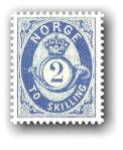
Both César Franck and Auguste Rodin belonged to the Symbolist movement of the late 19th century, with its sacred ideal and interest in phenomena of metamorphosis.
They also shared the same mythical view of woman and the same sensuality, with its consequent risk of damnation. Both are highly representative figures of their period, although they seldom made use of an aesthetic that verged on the modern.
This according to “Auguste Rodin (1840–1917) et César Franck (1822–1890): Essai d’une étude comparée” by François Sabatier, an essay included in César Franck et son temps (Revue belge de musicologie/Belgisch tijdschrift voor muziekwetenschap XLV [1991] pp. 77–84).
While there is only circumstantial evidence that Franck and Rodin met, upon the former’s death the latter was commissioned to produce the commemorative medallion shown above.
Today is Franck’s 190th birthday! Below, Renée Fleming sings the “Panis angelicus” from Franck’s Messe à trois voix, op. 12.
Related articles:
















